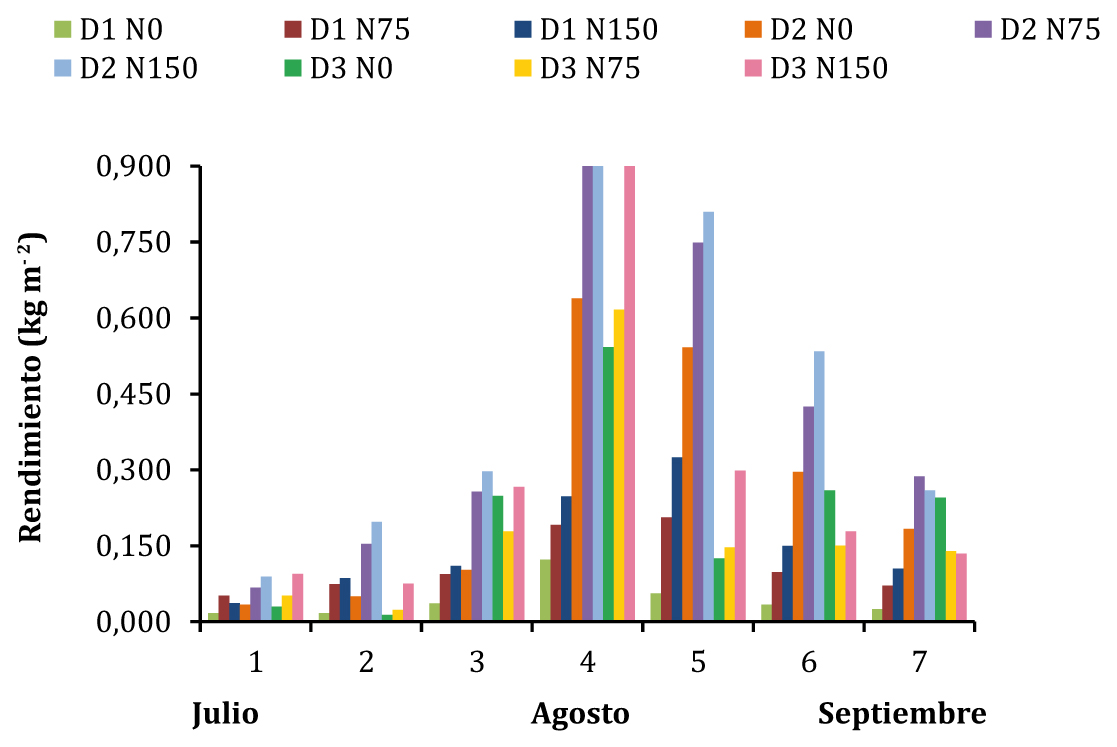Snap bean (Phaseolus vulgaris L.) production and profitability intercropping with maize in function of density and nitrogen in template climate
Keywords:
water use efficiency, agronomic efficiency, evapotranspiration, heat units, phenologyAbstract
Bean trellises climbing indeterminate commonly are wooden structures, metal or concrete, and plastic netting that increase the cost of production. The aim of this study was to evaluate the effect of density and nitrogen on yield and profitability of snap bean intercropping with maize in template climate. Sow was done in Montecillo, State of Mexico, and rainfall regime. It was used as living trellis blue native maize for snap bean, cv Hav-14 indeterminate climbing growth habit (Type IV). The treatments were: a) density of one, two and three snap bean plants (4, 8 and 12 pl m-2, respectively) by a corn; b) 0, 75 and 150 kg ha-1 of N, generating nine combinations of treatments. The highest yield and number of snaps beans was achieved with two snap bean plants and 150 kg ha-1 of N. Regardless of the treatments, the fourth and fifth cut the highest yield was found. The greater efficiency in water use, the higher net income and the higher net return was achieved with densities of two snap bean plants per hill and the highest level of nitrogen. These results are achieved with 950 ºC and 190 mm ETc.

Downloads
Published
Issue
Section
License
Aquellos autores/as que tengan publicaciones con esta revista, aceptan las Políticas Editoriales.


